[Click on BLUE links for sources and more information]
If you have read any of the posts on this site, you must be aware that Napkin Art adds an interesting historical and artistic dimension and adds immensely to the delight factor, if any is to be found, in reading the posts.
For those who know nothing of Napkin Art, in particular the napkin art produced in the Sea Gull Cellar Bar in the early 80s, you can read Sea Gull Cellar Bar Napkin Art Show or Where the Artists Play, a couple of easy introductions. There are eleven pages of poetry on the site where poems are coupled with napkin art, holiday napkin art pieces for Thanksgiving, Christmas and New Years, and more napkin art scattered throughout most all the posts.
In the process of cataloguing my collection of napkin art (should you have some that I haven’t photographed, please contact me at dhj@thinkinthemorning.com), I discovered a rare group of Udder Napkins. I have no idea how these came about. Maybe Max or Roy or Jack could provide some perspective on that since they seem to be the major contributors. In any case, I am collecting these Udder Napkins in this post for the sake of those who may wish to view them.
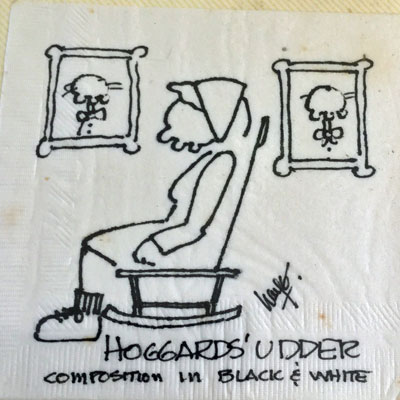
Sea Gull Cellar Bar Napkin Art, Jack Haye artist
I have my own idea as to why and how this Udder stuff got started. I have reason to believe the entire Udder Art movement is a communist conspiracy.
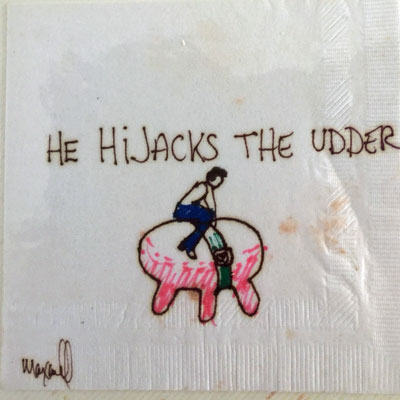
Sea Gull Cellar Bar Napkin Art, James Maxwell artist
Ubre Blanca (c. 1972–1985) was a cow in Cuba known for her prodigious milk production. The cow, along with the “Cordón de La Habana” coffee plantations, the Voisin pasture system, and the microjet irrigation system, symbolizes Fidel Castro’s efforts to modernize Cuba’s agricultural economy. The Spanish phrase ubre blanca translates to the English phrase “white udder.”
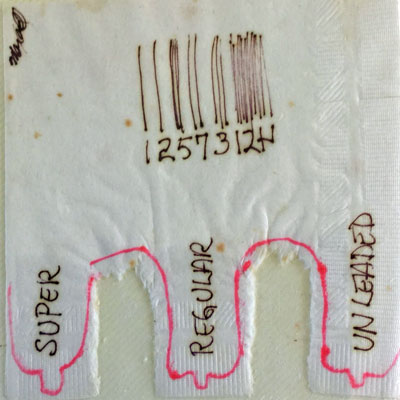
Sea Gull Cellar Bar Napkin Art, James Maxwell artist
Ubre Blanca produced 109.5 liters (241 pounds) of milk on a single day in January 1982 – more than four times a typical cow’s production. The cow also produced 24,268.9 liters of milk (about 55,090 pounds at 2.27 pounds per liter) in 305 days (one lactation period) ending in February 1982.[1] Both feats were recognized by Guinness World Records as world records at the time. The cow was a cross between a Holstein bull and a zebu.
It is my personal opinion that the Sea Gull Napkin artists had Castro in mind with their subtle napkin statements much like the Cuban exile and poet Ricardo Pau-Llosa who wrote about Castro and Ubre Blanca in his poem Ganaderia.
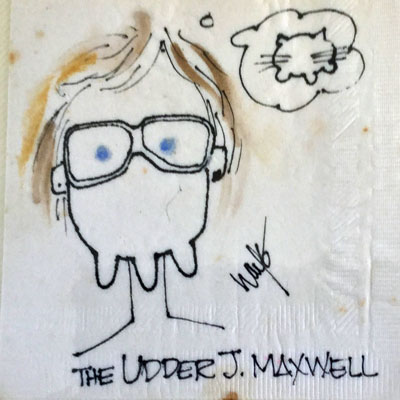
Sea Gull Cellar Bar Napkin Art, Jack Haye artist
Ricardo Pau-Llosa
Ganaderia (Cattle Raising)
Stories have it that when the rebels
descended on Camaguey province they ordered
the cattle slaughtered to feed the campesinos.
Neither the industry nor the cattle ever recovered.
The guerilla leaders were educated men,
how could they not know you don’t eat breeding stock?
Two decades later Fidel is in love with a cow,
Ubre Blanca (White Udder). Before the cameras
he explains each step of his gloved penetration,
bull semen dripping from his fist. Gently he lifts
Ubre Blanca’s tail after reassuring her
with a stroke on the rump. The foreman sinks
into the cow slowly and his face announces
the moment he opens his fist inside her.
One day the record breaking milk mother died
and a distraught Fidel ordered a monument be built
to White Udder, the revolutionary cow.
Fidel’s parents finally married to get him
into the Jesuit school in Oriente. The bovine
mother, the stern father, illegitimate Edmund
pulling a revolver against his rival’s head
in a café, the autonomous University his hideout.
He married the convenient daughter of a batistiano,
In exile former classmates will talk of his brutality,
but none opposed him when he descended from the Sierra.
They were educated men, how could they not know
what was coming? How could they not save Ubre Blanca
from the endless speeches, the cameras, and the fist?
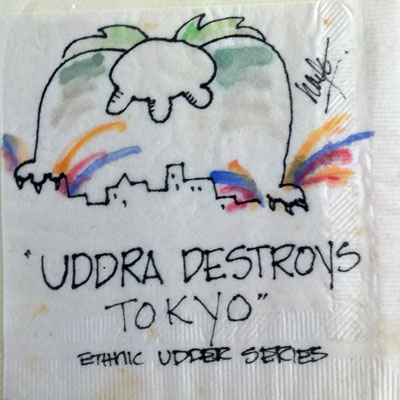
Sea Gull Cellar Bar Napkin Art, Jack Haye artist
The poem “Ganaderia” begins in Camguey during the Cuban Revolution with the slaughter of cattle to feed the campesinos and ends with Castro’s rise to power. Ricardo Pau-Llosa was clearly not a Castro sympathizer like most of the Cuban exiles who lost so much in the revolution. As for the napkin artists, I’ll let their art speak for them.
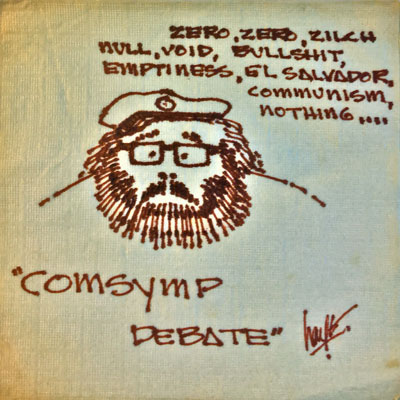
Sea Gull Cellar Bar Napkin Art, Jack Haye artist
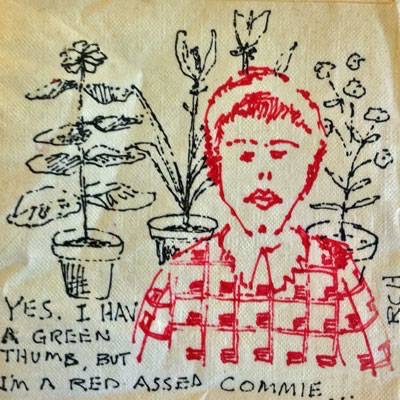
Sea Gull Cellar Bar Napkin Art, Roy Hoggard artist
For more on the most famous Cuban cow Ubre Blanca, you can link to Has Any Human Lived As Well As Fidel Castro’s Favorite Cow?
So there you have it in a nutshell, the origin and significance of Udder Art as I see it. I could be wrong. After all, I’m just a retired restauranteur and financial guy. But, I’ve looked into this thoroughly and until I hear otherwise from a trusted source, this is my story and I’m sticking to it.

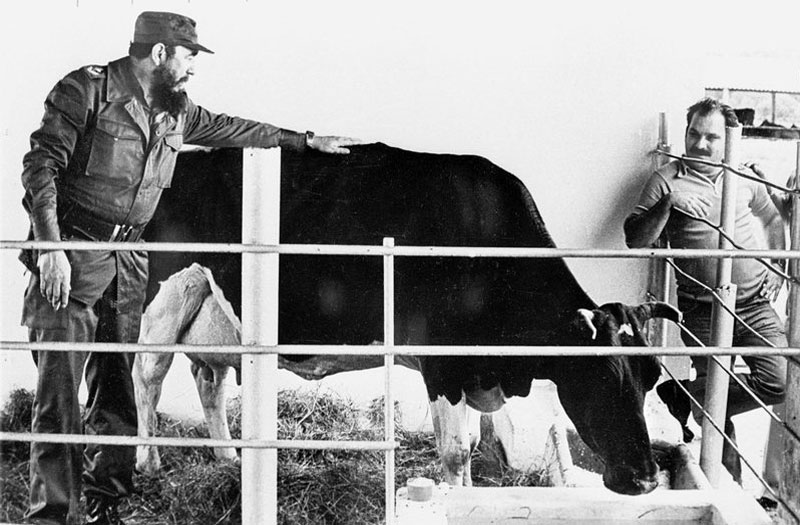
Who says fun and laughter can’t be repeated regardless of the decades.
David, thanks, I delight in the tender reminder of the udder. No slander –– a tickle.
Cheers for this,
Max
Jesus, did Castro really inseminate that poor cow with his arm? Bestiality, at the very least. And we know Castro was a queer-stomper extraordinaire. All kinds of grotesque irony abounds.